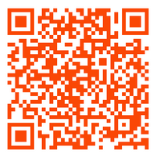How to Break Down Common Tasks Using the SafetyWallet Risk Assessment Methodology
Ever wondered how to make everyday tasks in your workplace safer? Stay tuned as we break down common tasks using the SafetyWallet Risk Assessment Methodology to ensure a safer work environment for everyone!
Risk assessments are crucial for maintaining a safe work environment, and in this blog, we'll show you how to apply this methodology to everyday tasks. Whether you're lifting heavy objects or operating machinery, understanding and mitigating risks is essential for workplace safety.
Before we start, if any other questions that you may have, remain unanswered, please complete the form below, and one of our experts will give you a no-obligation call!
Introduction to SafetyWallet Risk Assessment Methodology
The SafetyWallet Risk Assessment Methodology is a comprehensive approach designed to identify, evaluate, and control risks associated with various workplace tasks. This methodology ensures that all potential workplace hazards are recognized and managed effectively, promoting a safer work environment for everyone involved.
Step 1: Hazard Identification
The first step in the SafetyWallet Risk Assessment Methodology is identifying potential hazards associated with each task. For example, when lifting heavy objects, hazards might include muscle strains or back injuries. When operating machinery, hazards could include moving parts or electrical risks.
Hazard identification is a systematic process for establishing what can go wrong (likelihood) and what harm or loss could be caused (severity). This step involves recognizing anything in the task that could potentially cause harm, such as machinery, chemicals, or work processes, and the potential risks it represents to persons, infrastructure, and the environment.
Step 2: Risk Evaluation
Next, we evaluate the risks associated with each identified hazard. This involves assessing the likelihood of an incident occurring and the potential severity of the consequences. For example, the likelihood of a back injury from lifting heavy objects might be high, and the severity could range from minor strains to serious injuries.
Risk evaluation involves considering how often exposure might occur and the potential consequences if an incident occurs. This step is crucial for understanding the level of risk and prioritizing which hazards need immediate attention.
Step 3: Determining Health and Safety Control Measures
Once risks are evaluated, we determine appropriate control measures. For lifting heavy objects, control measures might include training on proper lifting techniques and using lifting aids. For operating machinery, control measures could include installing machine guards and providing personal protective equipment (PPE).
Control measures are identified, developed, and implemented to control or eliminate identified risks. This could include engineering measures, safety equipment, procedural changes, or employee training. The goal is to reduce the risk to an acceptable level.
Why not watch our latest video on My Safety Hub https://www.youtube.com/@MySafetyHub
If you like what you see, why not follow My Safety Hub @ https://www.facebook.com/MySafetyHubZA
Step 4: Control Measures Implementation and Monitoring.
After determining the control measures, the next step is implementation and monitoring. SafetyWallet's OHS Online platform helps you manage this process effectively. It provides tools to implement control measures and continuously monitor compliance, ensuring that safety measures are working as intended. Implementation involves putting the control measures into practice and ensuring that they are followed consistently. Monitoring involves regularly checking that the control measures are effective and making adjustments as necessary. This step is essential for maintaining a safe work environment and ensuring that risks are managed effectively.
Sponsored Segment
This blog is proudly sponsored by Walli from SafetyWallet, your dedicated AI assistant specializing in health and safety. Walli is available 24/7 to answer your questions, provide valuable information, and ensure a safe and productive workplace environment. By simply registering, you can start using Walli with 4 free monthly credits! Walli helps you conduct thorough risk assessments, track compliance, and implement effective safety measures, making it easier to manage health and safety responsibilities.
Thank you, Walli, for sponsoring this blog and supporting our mission to promote health and safety.
Use the below link to register today. Scan or click the QR code.
Step 5: Risk Assessment Review and Continuous Improvement
Finally, we have review and continuous improvement. This step involves revisiting the risk assessments periodically to ensure they remain effective. It's important to make necessary adjustments based on new information or changes in the workplace. Continuous improvement is key to maintaining a safe and compliant work environment.
Reviewing risk assessments involves looking at the effectiveness of the control measures and making any necessary changes. Continuous improvement involves regularly updating the risk assessment process to ensure it remains effective and relevant. This step is crucial for maintaining a high level of safety in the workplace.
By following these five steps, you can break down common tasks and conduct thorough risk assessments to ensure a safer work environment. The SafetyWallet Risk Assessment Methodology provides a comprehensive approach to workplace safety.
For more detailed guidance and support, consult with SafetyWallet's support team and your Safety Professional. The OHS Online Cloud-Based Health and Safety Management System is available to all subscribers to assist them with the day-to-day managing of the SafetyWallet Health and Safety Programme.
If you found this blog helpful, please share it with your colleagues. We have multiple resources on our platform that cover various aspects of Risk Assessment, so be sure to check those out as well.
And as always, Stay Safe, Stay Inspired, and Until Next Time, Take Care
The SafetyWallet Triple P Health and Safety Management System (HSMS) is available at no cost to all SafetyWallet subscribers, and supported by MAKROSAFE team members. This means you are able to get a state-of-the-art system with operational support for your entity, thereby improving health and safety in the workplace as well as your legal compliance to Health and Safety Legislation.



Leave a comment